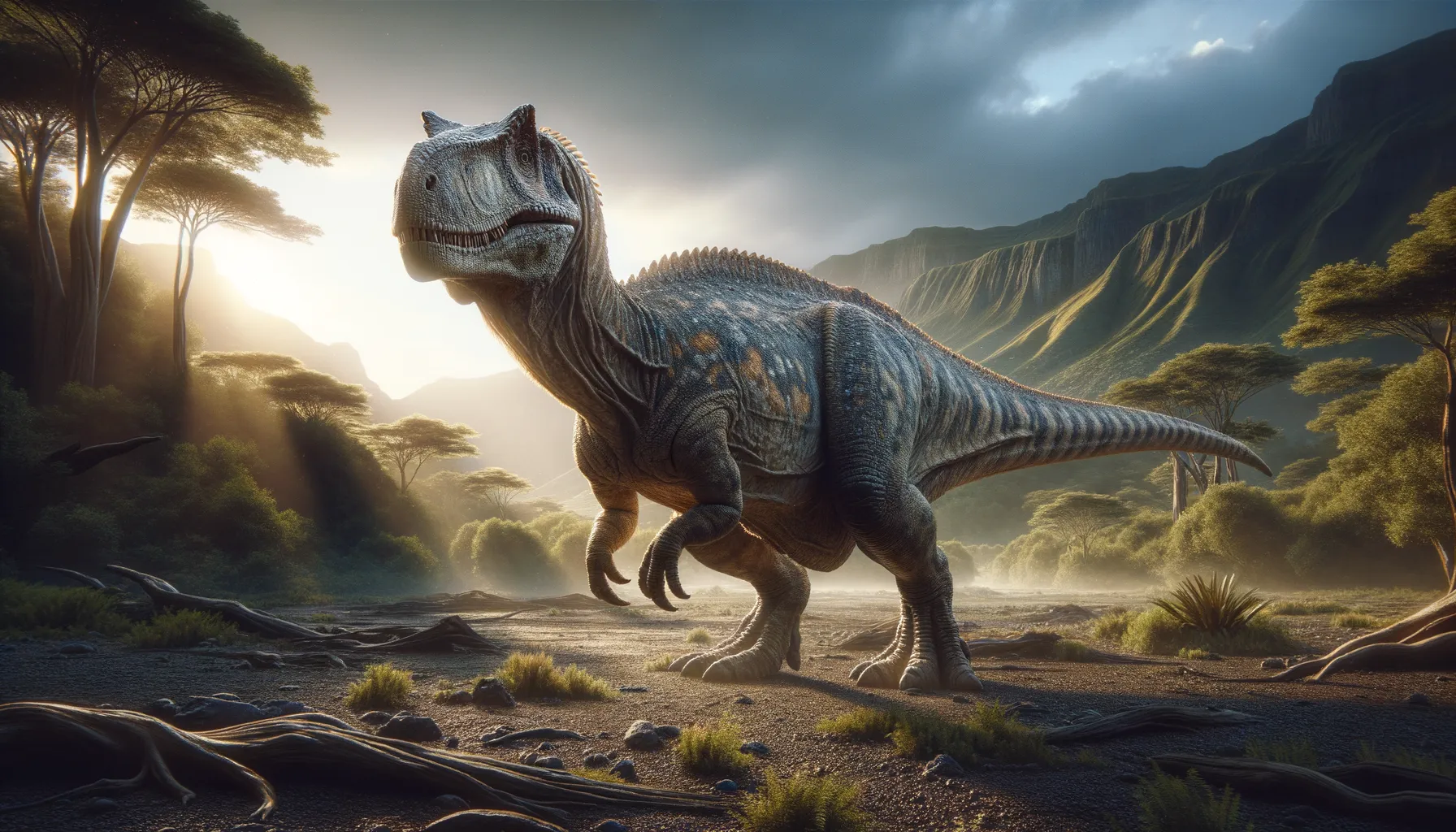
Wadhurstia
Heavyweight herbivore of the ancient lands.
Period
Cretaceous
Length
Approximately 20 feet long.
Height
Around 10 feet tall.
Weight
Estimated to weigh around 1 ton.
Wadhurstia was a dinosaur known for its heavy build and likely herbivorous diet. Residing during the Cretaceous period, it roamed the prehistoric landscapes of what is now England. Despite its imposing size, it was not particularly fast and likely used its size and potential defensive features to deter predators. Its fossils have provided insightful glimpses into life during its time, contributing to our understanding of dinosaur ecosystems.
Diet
Wadhurstia likely fed on a variety of plants, using its teeth to strip foliage. Its diet consisted mainly of low-lying vegetation, which it could easily access due to its height and reach.
Hunting
As an herbivore, Wadhurstia did not hunt for prey. It would have spent significant time foraging for its plant-based diet, likely moving in groups to access plentiful food sources.
Environmental challenges
Wadhurstia faced a variety of environmental challenges, including predation from larger carnivorous dinosaurs. Seasonal changes would affect the availability of plant resources, requiring migration or adaptation. Natural disasters, such as floods or droughts, could have significantly impacted its habitat and food supply.
Speed
Relatively slow due to its size and build.
Lifespan
Estimated to live up to 20-30 years.
First discovery
First discovered in the Wadhurst Clay Formation, England.
Fun Facts
- Wadhurstia was a dinosaur from the Early Cretaceous period, around 140 million years ago, which is part of a fascinating time when new dinosaur species were diversifying.
- It was named after Wadhurst, a town in East Sussex, England, where its fossils were first discovered, highlighting the rich prehistoric history of the region.
- Unlike the gigantic dinosaurs often depicted in movies, Wadhurstia was relatively small, offering a glimpse into the diversity of dinosaur sizes.
- Fossils of Wadhurstia have helped scientists understand more about the ecosystem of the time, revealing interactions among species in old forests and wetlands.
- Wadhurstia is believed to have been a herbivore, munching on plants that thrived during its era, contributing to the plant-dinosaur food web.
- Paleontologists have found various interesting features in Wadhurstia's fossils that give us clues about dinosaur anatomy and adaptation during the Early Cretaceous.
- The study of Wadhurstia fossils continues to enthrall scientists, revealing details about the paleoclimate and geological changes of its time.
Growth and Development
Wadhurstia likely experienced rapid growth during its early years to reach a size that offered more protection from predators. Its development would be focused on growing a sturdy frame to support its large body. Over time, it would mature into an adult with well-developed defense mechanisms, possibly including thick skin or bony spines.
Habitat
Wadhurstia lived in regions that were characterized by abundant plant life, likely near water sources. Its habitat would have included lush forests or plains with plenty of flora to sustain its herbivorous diet. The environment provided both challenges and opportunities for survival amid fluctuating climates and ecological changes.
Interaction with other species
Wadhurstia likely cohabitated with a number of other dinosaur species, both herbivores and carnivores. Interaction with other herbivorous species might have involved competition for food resources. Encounters with predators required it to rely on its size and potential group dynamics for defense.
Natural lifespan
Naturally, it could live up to three decades.
Reproduction
Wadhurstia reproduced through egg-laying, constructing nests in safe areas. Likely, only a fraction of the young survived to maturity due to predation and environmental risks. Parental care details remain speculative, but communal protection of nests might have been a strategy.
Social behaviour
Wadhurstia may have engaged in social behaviors, such as group foraging, to improve survival odds. Living in herds could offer protection from predators and ensure better access to food. Its social structure remains mostly speculative but likely influenced by environmental pressures.
Fossil locations
Fossils of Wadhurstia have primarily been found in the Wadhurst Clay Formation in England. These fossils have helped piece together its lifestyle and ecological roles. The discovery of such fossils provides valuable insights into the dinosaur communities of the Cretaceous period in Europe.
